|
|
|
Sort Order |
|
|
|
Items / Page
|
|
|
|
|
|
|
| Srl | Item |
| 1 |
ID:
129685
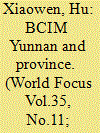

|
|
|
|
|
| Publication |
2014.
|
| Summary/Abstract |
BCIM (Bangladesh, China, India and Myanmar) forum for regional cooperation was jointly initiated by think tanks of China and India at the end of 1990s. on August of 1999, the first conference was held in Kunming and announced Kunming initiative, which opening the exploration of BCIM forums were convened persistently and alternately from 1999-2013 among four countries.
|
|
|
|
|
|
|
|
|
|
|
|
|
|
|
|
| 2 |
ID:
128315
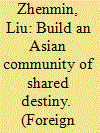

|
|
|
|
|
| Publication |
2013.
|
| Summary/Abstract |
As a member of Asia, China's development is rooted in Asia, and Asia has always been a priority on China's diplomatic agenda. China's growth has benefited from a peaceful neighboring area and, in turn, promoted stability and prosperity in Asia. At the same time, China and its neighbors are faced with both historic opportunities and challenges in development. Since the new government in China took office in 2013, China and other Asian countries have had frequent high-level exchanges and stronger cooperation in the field of economy and trade. China actively upholds peace and stability in the region and is working with other Asian countries to build a bright future for an Asian community of shared destiny.
|
|
|
|
|
|
|
|
|
|
|
|
|
|
|
|
| 3 |
ID:
130577
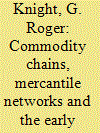

|
|
|
|
|
| Publication |
2014.
|
| Summary/Abstract |
This paper discusses the foundational history of a major European mercantile house in colonial South East Asia in the context of commercial developments that had both a regional and global reach. In so doing, it seeks to relate a local and historically particular event to a broader world pattern defined by three rapidly evolving commodity chains, based respectively on the production, distribution and consumption of cotton goods, coffee and opium. In this context, the paper argues that the hard-won commercial success of the firm in question resulted from a significant degree of withdrawal from the bilateral ties between colony and metropolis inherent in the cotton and coffee commodity chains. In their place, the firm had recourse to several varieties of the inter-Asian trade, of which the opium commodity chain constituted the key dimension.
|
|
|
|
|
|
|
|
|
|
|
|
|
|
|
|
| 4 |
ID:
100152
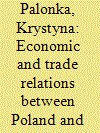

|
|
|
|
|
| Publication |
2010.
|
| Summary/Abstract |
The recent economic recession over much of the developed world may, at least partly, redirect Chinese activity towards regions different from those traditionally at the centre of Chinese interests. One such area is the eastern Baltic, in general, and Poland, in particular, as a large economy in the region. While there have been some political tensions in recent years, this article emphasises that cultural and economic relations have been developing significantly faster in the last few years, with mutual recognition increasing. While, not unexpectedly, there is still an imbalance of the quantity goods traded, and of a divergence in the categories of such goods, there are good reasons for optimism as recent high-level visits between both countries have shown. Looking at such factors as foreign direct investment growth and stimulus packages, this short descriptive, rather than analytical overview, presents a case for an optimistic scenario even if it does indicate a background of some uncertainty in the global context impacting upon growth of relations between the two countries.
|
|
|
|
|
|
|
|
|
|
|
|
|
|
|
|
| 5 |
ID:
123701
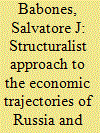

|
|
|
|
|
| Publication |
2013.
|
| Summary/Abstract |
I introduce geographical specificity to world-systems concepts of core and periphery to develop a structuralist approach on semiperipheral development in the world-economy. I apply this approach to the historical trajectory of economic growth in Russia and east-central Europe since 1900. I find circumstantial support for Wallerstein's classic assertion that mercantilist semi-withdrawal is a potentially effective development strategy for semiperipheral countries and show that Russia raised its economic output above historical trend levels during the Soviet period. In contrast, east-central Europe fell short of historical trends during the Soviet period, suggesting that Russia's gains may have been made at the expense of its satellite empire. With the end of communism, both Russia and the countries of east-central Europe quickly returned to their long-term historical output levels relative to the core countries of western Europe.
|
|
|
|
|
|
|
|
|
|
|
|
|
|
|
|
|
|
|
|
|